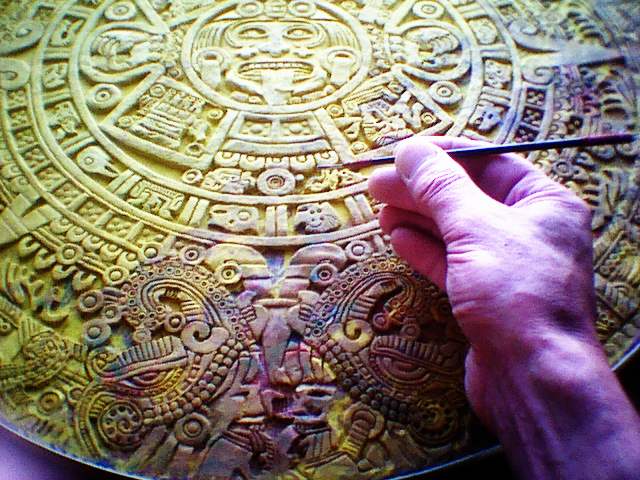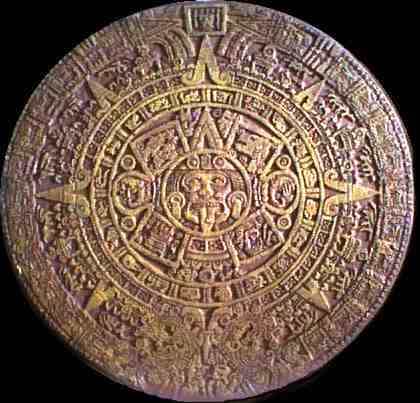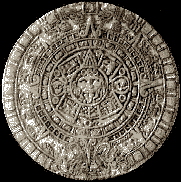|
My plasticene master under
construction:~

Aztec Calendar
- Sun Stone This is the Aztec Calendar, perhaps the most famous symbol
of Mexico, besides its flag. The original object is a 12', massive stone
slab, carved in the middle of the 15th century. Many renditions of it
exist and have existed through the years and throughout Mexico. Historically,
the Aztec name for the huge basaltic monolith is Cuauhxicalli Eagle
Bowl, but it is universally known as the Aztec Calendar or Sun Stone.
It was during the reign of the 6th Aztec monarch in 1479 that this stone
was carved and dedicated to the principal Aztec deity: the sun. The
stone has both mythological and astronomical significance. It weighs
almost 25 tons, has a diameter of just under 12 feet, and a thickness
of 3 feet. On December 17th, 1760 the stone was discovered, buried in
the "Zocalo" (the main square) of Mexico City. The viceroy of New Spain
at the time was don Joaquin de Monserrat, Marquis of Cruillas. Afterwards
it was embedded in the wall of the Western tower of the metropolitan
Cathedral, where it remained until 1885. At that time it was transferred
to the national Museum of Archaeology and History by order of the then
President of the Republic, General Porfirio Diaz. 
|



